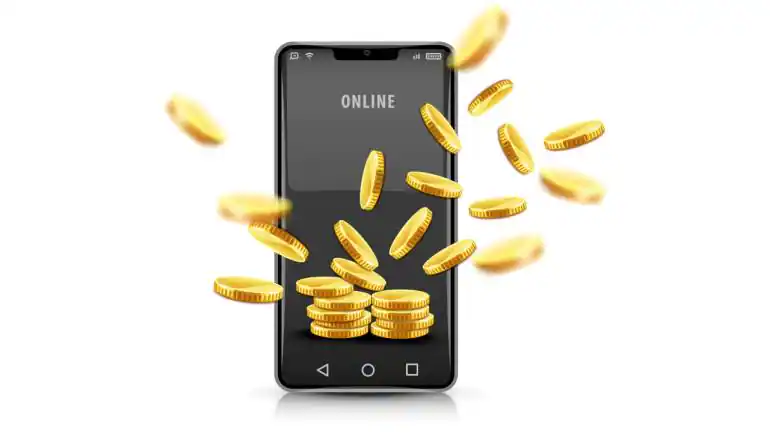Imagine your crypto wallet gone in a blink—funds, access, all of it. Terrifying, right? That’s why the importance of backing up your crypto wallet information cannot be understated. It’s like your personal fortress, guarding your digital coins against the unexpected. Whether it’s a tech glitch or a misplaced device, backups are your fail-safe. Stick with me as I show you how to secure your digital wealth like a pro. Let’s dive into simple yet powerful strategies to shield your assets and ensure your crypto journey isn’t derailed by mishaps.
The Foundation of Crypto Security: Understanding Wallet Backups
The Necessity of Crypto Wallet Backup Strategies
Imagine losing your wallet in the real world. You’d hope you had some backup cash somewhere, right? It’s the same with crypto. Without a backup, you could lose all your digital money in a blink. That’s why having a good crypto wallet backup strategy is key. Backup means you’re ready if bad stuff happens, like your phone taking a swim or your laptop deciding to take a permanent nap. It’s your plan to protect your digital coins from disappearing.
Data Loss Prevention Tactics for Digital Currency
First things first, let’s talk seed phrases. That’s your crypto wallet’s lifeline. Lose it, and wave goodbye to your digital gold. You’ve got to store your seed phrases safely. Write them down on paper or maybe engrave them on metal. Keep them somewhere safe, like a locked box. Just like you wouldn’t leave your house key under the doormat, don’t let your seed phrase get too comfy in an obvious spot.
Next, think about making copies of your wallet info. Store them in different places. This is what we call crypto wallet redundancy. It’s like having spare keys. More copies, less worry. But keep those copies locked up tight! Let’s not make it a party for wallet hackers.
And here’s a golden rule: backup your private keys too. If you don’t know, these keys are like secret codes that let you into your wallet. Back them up, or risk getting locked out forever. No joke, losing these keys can mean saying bye-bye to your crypto for good.
It’s not just about making backups, though. You have to check they work too. Think about it. You wouldn’t trust a lifejacket that’s never been tested, right? Same goes for backups. Test your wallet recovery process every now and then. Make sure your backups still let you restore cryptocurrency access when you need to.
Don’t just trust any old cloud storage for wallet keys either. Look for secure, encrypted backup solutions. Encryption’s like a secret code that keeps out nosy people. That means even if someone gets their hands on your backup, they can’t do much with it because it’s all code talk to them.
Then, there’s the big one. Avoid losing digital currency by not making silly backup mistakes. Like forgetting your backup exists. Or not updating it when you add more coins to your wallet. Keep your backups as fresh as your digital investments.
Remember, protecting crypto investments isn’t just about buying and selling. It’s also about keeping them safe from every angle. Disaster recovery for digital assets means being ready for the worst. It’s the only way to sleep easy at night, knowing your digital treasure is secure.
So, building a fortress for your crypto starts with some good old backup strategies. They’re your first line of defense in this wild world of digital currency. Solid backups mean you can fight off data loss, dodge wallet information theft risks, and even outsmart the sneakiest of hackers. Because when it comes to your digital gold, it’s better to be safe than sorry.
Implementing Redundant Safeguards for Your Wallet
Best Practices for Storing Recovery Seed Phrases
Your crypto wallet seed phrase is like a master key. It can unlock your digital gold. So, you must keep it safe and hidden. Write it down on paper. Keep it away from online dangers. Avoid storing it in plain sight where others can find it.
Next, make copies. Use a metal backup tool if you can. This way, fire or water won’t harm your seed phrase. And remember, never share it! Not even with folks who say they’re from the wallet company. They’re likely trying to steal from you.
Store these backups in different locations. A safe in your home and a bank’s safety deposit box work well. This way, if something bad happens in one place, you still have another copy safe.
Ensuring Multiple Wallet Copies and Redundancy
Let’s talk about making copies of your wallet info. You want to avoid losing all you’ve put into crypto. This means having more than one backup. Digital and physical copies can both help.
For digital safety, think about using a USB drive or even a hard drive. Just protect it with a strong password nobody else knows. Cold storage backup options are good too. These are wallets kept offline. They are safe from hackers because they’re not connected to the internet.
Also look into cloud storage for wallet keys. Yes, it’s online, but it can be secure with the right steps. Encrypt your data before uploading it. Use a strong password. Think about two-factor authentication too.
Finally, test your backup system. Best practices mean nothing if they don’t work when needed. Try to restore access to your wallet from your backup. This way, you know your backups are solid.
Remember, it’s your job to protect your crypto investments. Redundancy and security are key. Don’t learn the hard way that your backup wasn’t enough. Because in crypto, once it’s gone, it’s gone for good. So, duplicate your wallet info and store it right. Stay safe in this digital treasure hunt!
Advanced Techniques in Cryptocurrency Wallet Backup
Exploring Hardware Wallet Backup Options
We all guard our cash like it’s gold. For crypto, it’s the same. Just digital. Your crypto wallet is a treasure chest. Backup keeps it safe from thieves and forgetfulness. Hardware wallets are like strong safes. They keep your crypto locked and secure.
When you think about a hardware wallet backup, picture a vault door. It’s tough for hackers to crack. But what if you forget the code? That’s where backups come in. Write down your recovery phrases from your hardware wallet.
Always store them in a hidden spot. A safe or a locked drawer works well. Some folks even split the phrase up. They keep it in different places. This way, they avoid the risk of losing it all at once. It’s a crafty move. You’re playing a smart game of hide and seek with your own wealth.
Having a backup means you can sleep well. You know your digital gold is safe. Let’s say you lose your wallet. Or it gets damaged. With your backup phrase, you get back to your crypto. It’s like having a second key to your safe.
Remember to handle your wallet’s backup with as much care as your wallet. After all, if someone finds your backup, they find your crypto.
Utilizing Encrypted and Cold Storage Backup Solutions
Now, let’s dive into encrypted and cold storage options. Think of encrypted backups as secret codes. Only you know how to read them. It’s a safe way to keep your wallet info out of bad hands.
Use a password to lock your backup. It scrambles the data. Without the password, it’s all gibberish to anyone who tries to peek. You can store this encrypted backup on a flash drive or even online. But don’t forget that password. Without it, even you can’t get back in.
Cold storage is another backup hero. It’s like keeping your chocolate in the fridge. It keeps it fresh and away from hungry hands. With cold storage, your wallet’s info stays offline. This means hackers can’t get to it through the internet. It’s a guard dog that doesn’t sleep.
Some people print out their keys or use metal engraving. They make sure it won’t get damaged by water or time. Then, they stash it away like a time capsule. Preferably somewhere fireproof and discreet.
Others go old school with a paper wallet. Just a piece of paper with your keys written down. Simple, but effective. Of course, paper can get lost or turn to mush in water. So, store it like it’s a map to buried treasure.
Quick Recap: Crypto is precious. Backup your wallet to safeguard your assets. Use hardware wallets for strong protection. Hide your recovery phrases well. Encrypt backups like they’re secret codes. Store them in your own digital fridge – cold storage. Keep it safe, keep it secret, and you’ll avoid heartache.
Remember, each backup you make is a step toward peace of mind. Keep checking and updating your backup methods. Your future self will thank you. Now is the time to ensure your digital gold is forever yours to mine.
Regular Maintenance and Recovery Simulations
Testing Your Wallet Recovery Process
Love your crypto like your wallet loves your cash? Then back it up! Keep those digital dollars safe with a plan. Check it, like you check your smoke alarms. Lost your phone? Water spill fried your laptop? No sweat! If you back up, you’re okay. Oh, you think it’s hard? Nope, it’s easy! You gotta have a recovery plan. Just like a fire drill, test your wallet recovery. Try restoring from your backup. Hit a snag? Better now than when it’s real money on the line.
Crypto wallet backup strategies help but only if they work. Do a test run today. Don’t wait until your screen goes black to figure it out. Make sure you can get back to your crypto fast.
Contingency Planning and Recovery Best Practices
Now, let’s talk safe keeping. Like a secret fort, your digital gold needs walls. A good plan stops bad things from happening to your stash. Stick to best practices. Write down your seed phrase. Yes, pen and paper style. Store it somewhere safe like a lockbox. Not just one place, though. Try two or three, in case one goes missing. Disaster recovery for digital assets? It’s about having a plan A, B, and C.
But don’t just hide it and forget it. Check on it. Make sure it’s still there, still safe. And here’s a smart move — use a hardware wallet. It’s a tough nut to crack for those wallet hackers. Secure digital wallet? It’s like a safety vest for your crypto.
Don’t share your backup, okay? Keep it to yourself. Think silent movie! Data loss prevention crypto style means guards up, always. Your recovery phrases, keys, and other secrets must stay yours.
Encrypt what you can. This keeps your backup from prying eyes. Encrypted backup solutions are your invisible ink. Cloud storage for wallet keys can help, but be picky. Choose one that’s built like a bank vault.
A little reminder, friend — keep tabs on your backup’s backups. Make copies, but keep them safe. Store them far from the originals. Multisignature wallet safeguards? Good stuff. They’re like having two keys instead of one to open your safe.
Remember, crypto needs more than a strong password. You need a map to get back your digital treasure. Storing recovery seed phrases correctly, that’s the X on the map.
Think of it like this. Your crypto’s on a wild ride. You’ve got to strap it in tight. Secure wallet information transfer is a must when you move it around. Passphrases and PIN codes? Think of them as the seatbelt for your digital dollars.
So there you have it. Back up your private keys, your seeds, your whole wallet. But hey, don’t just lock it down. Make sure you can unlock it too. That’s the drill, the real test of your safety plan. The key to no-worry crypto is a backup that’s got your back.
We’ve covered the key steps in securing your crypto wallet. First, we looked at why backing up your wallet is crucial. I showed you how to prevent loss of your digital currency. Then, we tackled adding layers of safety. This includes storing recovery phrases correctly and making sure to have wallet copies.
Moving ahead, we dived into advanced backup options. Think hardware wallets and encrypted storage. These methods keep your crypto safe from various threats. Last, I stressed the importance of regular checks and recovery drills. This ensures you are ready for any mishap.
I believe these strategies are vital. They protect your investments and give you peace of mind. Apply them and rest easy knowing your crypto is secure. Stay safe and keep your digital wealth protected!
Q&A :
Why is it essential to back up your crypto wallet information?
Backing up your crypto wallet information guards against data loss due to device failure, theft, or corruption. It’s a crucial safety step that ensures you maintain access to your cryptocurrencies. Without a backup, if you lose your wallet or forget the password, you might be forever unable to access your digital assets.
What are the best practices for backing up a cryptocurrency wallet?
Best practices for backing up your cryptocurrency wallet include storing the backup in a secure location that is both physically safe and protected from online threats. The backup should also be in a place separate from where you normally access your wallet to prevent simultaneous loss. It’s recommended to use backup methods like writing down the seed phrase or private key, using hardware wallet backups, and exploring multi-signature options if available.
How often should you backup your cryptocurrency wallet?
You should back up your cryptocurrency wallet every time you create a new address or when you make a significant change to your wallet. However, it’s essential to secure your seed phrase or private key backup from the very beginning, as this will not often change. Regularly check and maintain your backups to ensure they are in good condition and still accessible.
Can backing up a crypto wallet protect against unauthorized access?
Backing up your crypto wallet information does not prevent unauthorized access by itself; it is a method to ensure continuity of access for the legitimate owner. To protect against unauthorized access, implement strong security measures such as employing hardware wallets, using two-factor authentication, and maintaining good password hygiene alongside the backup process.
What happens if I don’t back up my crypto wallet information?
If you don’t back up your crypto wallet information and you lose access to your wallet, you risk losing all the assets stored in your wallet. As cryptocurrency transactions are irreversible and wallets often don’t have a recovery mechanism like traditional banking systems, the importance of backing up your wallet information cannot be overstated.



